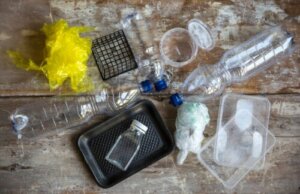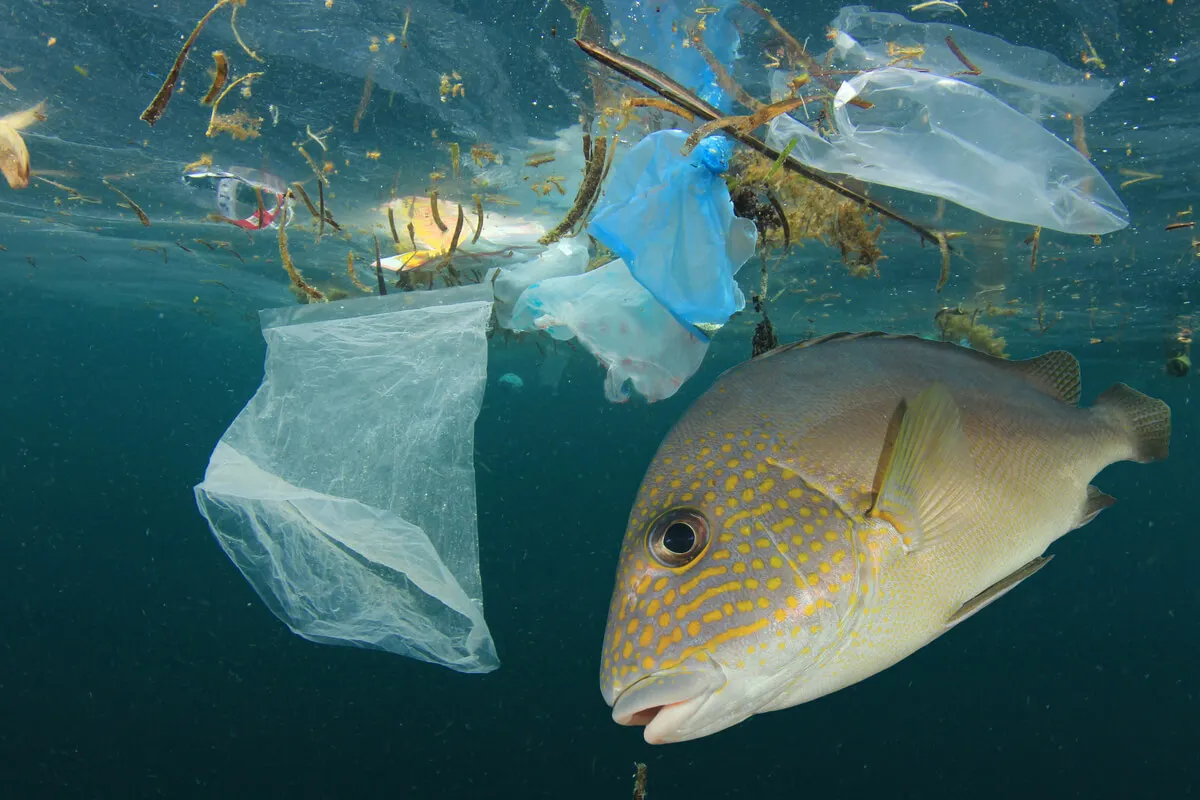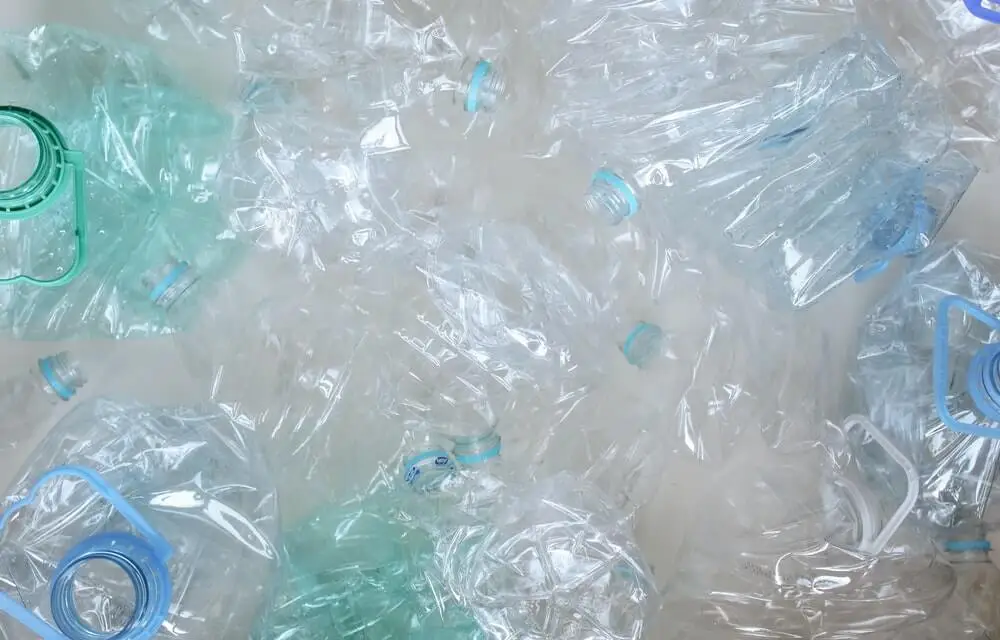Single-use Plastics: What They Are and Why You Should Avoid Them

Grocery shopping bags, drinking cups at parties, and bottles of our favorite beverages often seem like harmless objects. However, in the large dimensions in which they’re manufactured and consumed, these single-use plastics are damaging the ecosystem in an irreversible way.
The data on plastic waste are alarming and place the seas and oceans as the main damaged areas. Its already known that there are five islands formed by plastic waste around the world, some of which are larger than France and Spain. As a result, marine fauna and birds are seriously affected.
Limiting single-use plastics is an urgent measure to be taken by large corporations and governments. However, it’s also an action that can be taken on a daily basis to help reduce pollution.
What are single-use plastics?
These are objects made from plastic materials, which are intended for one-time use and then discarded. Plastics are made from fossil fuels, such as natural gas, oil, and coal, and represent an ever-increasing production. This, of course, causes the planet’s pollution to worsen, as the material is one of the most harmful to the environment.
Although plastic production has existed since the 19th century, it’s only in the last few decades that it has exploded in popularity. Large companies realized that costs could be reduced if, for example, they introduced plastic instead of glass for beverage bottles. This is just one example among many.
However, the truth is that production has increased dramatically. Along with it, so does waste generation.
According to a United Nations report, plastic waste increased from 2 million tons in 1950 to almost 350 million tons in 2017. Predictions are also not favorable for the coming years if our habits and forms of production are not changed.
We think you may also enjoy reading this article: What Is Jute and Why Is it Recommended to Replace Plastic Bags?
The maritime impact
The environmental consequences of this industry are fatal and most directly impact the oceans. A study by several specialists published in the journal Science revealed that between 4.8 and 12.7 million tons of plastic end up in the oceans every year.
The figures could worsen considerably if immediate action is not taken. It’s estimated that, by 2050, greenhouse gas emissions linked to the plastic circuit will account for 15% of total emissions. All this accumulation of waste in the seas has generated unprecedented phenomena in the history of the planet.
For example, scientists have also discovered the appearance of 5 islands formed by plastic garbage. This is due to the fact that this material takes centuries to degrade.
When it’s discarded and exposed to the sun, plastic breaks into pieces, giving rise to microplastics that accumulate in the ocean. The best known of these islands is the Great Pacific Island, located in the western United States, near Hawaii. It’s estimated to cover an area of 1.8 million square kilometers, making it three times the size of Spain.

How do we consume single-use plastics?
These objects are immersed in everyday practices of all kinds. The consumption of single-use plastics is so naturalized that it’s often difficult to even realize it.
This excessive consumption, which has also increased over the last five decades, is linked to the proliferation of the throwaway culture. It’s also closely linked to fast food and take away.
According to UN data, 1 million plastic bottles are bought every minute, while 500 billion bags are used every year. These are some of the most commonly used objects in daily practice. However, there are single-use plastics for multiple functions.
Cups, cutlery, and Unicel
These are elements widely used in parties of all kinds. Although they help us to avoid the task of washing, their discarding contributes to tons of plastic waste since they take decades to degrade.
Both the utensils for events, such as Unicel or Styrofoam, are made with polystyrene. It’s advisable to avoid this ingredient in food containers and packaging due to the hundreds of years it takes to decompose.
Bottles and caps
In addition to the enormous worldwide production of bottles, the big problem is the long degradation period. This can take up to almost half a century.
The plastic used for their manufacture is generally polyethylene terephthalate, also known as PET. The lids and caps are made from polypropylene. On the plus side, these are recyclable materials.
Balloons
Despite being an important children’s entertainment, balloons and the sticks used to hold them are very harmful to the environment. Recent restrictive measures adopted by the European Union have limited their use.
Bags
One of the most environmentally damaging single-use plastics is this one. Shopping bags are produced in large quantities and can take more than 100 years to decompose.
Many countries have already taken steps to replace them; however, this is a task that also falls to individual consumers. On the other hand, there are garbage bags made of low-density polyethylene, also used in cling film and freezer bags.
Like this article? You may also like to read: Plastic versus. Bamboo Toothbrushes: Advantages and Disadvantages
Other single-use plastics
- Plastic cotton swabs. The object used to sanitize the ear is a single-use plastic that takes 300 years to disappear.
- Straws. These drinking objects can take up to a century to disappear. They’re also one of the elements that most affect marine species.
- Cigarettes. Cigarette butts or filters made from cellulose acetate take between 1 and 10 years to degrade.
- Hygiene articles. In addition to cotton swabs, items such as tampons and sanitary napkins are also made from single-use plastics.
- Wrapping. Snacks and candy should not only be avoided in food, but their packaging is also very harmful to the environment.

Avoid single-use plastics
The magnitude of the problem demands urgent solutions from the authorities. That’s why in 2019 the European Union approved a directive to reduce the consumption of these elements. The regulation, which came into force in 2021, bans the sale of some single-use plastics, such as utensils, straws, and swabs. It also requires member countries to allocate a percentage of plastics for recycling.
For its part, Spain passed the Waste Law in 2022, which complies with European Union measures. It also creates taxes on single-use plastic packaging and waste generation. Other countries that are trying to get back on track include Bangladesh, where plastic bags have been banned for 20 years, and Chile.
Bags are also banned, or on the way to being banned, in New Zealand, in several African countries, and in some cities in the United States. The UN General Assembly pledged to develop a legally binding agreement by the end of 2024, with the commitment of more than 175 countries. It’s designed to modify the entire plastic cycle in the world, from its production to its disposal.
Individual actions to replace single-use plastics
Beyond government measures, the reduced consumption of these plastics also contributes to waste reduction. For example, carrying cloth shopping bags or purchasing reusable utensils to organize an event can really help.
Consumption of bulk products also avoids having to rely on too much packaging. Replacing hygiene items with reusable ones is also a useful and achievable measure.
Some such objects may be earbuds or toothbrushes. It’s always best to choose less polluting materials, such as wood, ceramic, or bamboo.
As a client of certain businesses or companies, it’s important to demand that they take into account the care of the environment. We can do this either by posting messages on social networks or issuing personal comments.
All cited sources were thoroughly reviewed by our team to ensure their quality, reliability, currency, and validity. The bibliography of this article was considered reliable and of academic or scientific accuracy.
- JENNA R. JAMBECK, ROLAND GEYER, CHRIS WILCOX, THEODORE R. SIEGLER, MIRIAM PERRYMAN, ANTHONY ANDRADY, RAMANI NARAYAN, KARA LAVENDER LAW. Plastic waste inputs from land into the ocean. Revista Science. 13 Feb 2015 Vol 347, Issue 6223. pp. 768-771. Disponible en: https://www.science.org/doi/abs/10.1126/science.1260352?siteid=sci&keytype=ref&ijkey=BXtBaPzbQgagE
- Montero Mórtola, Cecilia, BOLSAS DE PLÁSTICO Y LAZOS SOCIALES. NOTAS DE CAMPO SOBRE RECICLAJE. Aposta. Revista de Ciencias Sociales [Internet]. 2011; (48):1-24. Recuperado de: https://www.redalyc.org/articulo.oa?id=495950244001
- ONU Medio Ambiente. Plásticos De Un Solo Uso: Una Hoja De Ruta Para La Sostenibilidad. Ed. Giacovelli Claudia et al. ONU Medio Ambiente, 2018. Disponible en: https://www.unep.org/es/resources/informe/plasticos-de-un-solo-uso-una-hoja-de-ruta-para-la-sostenibilidad
- Clara Bollaín-Pastor y David Vicente-Agulló. Presencia de microplásticos en aguas y su potencial impacto en la salud pública. Ministerio de Sanidad, Consumo y Bienestar social. Revista Española de Salud Pública, vol. 93, e201908064, 2019. Disponible en: https://www.redalyc.org/journal/170/17066277062/html/
- Sánchez Artunduaga, Pompilio, Edier Hernán Bustos Velazco, and Jaime Duván Reyes Roncancio. “La Educación Ambiental: Problemática de Los Plásticos de Un Solo Uso En Las Instituciones Educativas.” Revista Boletín Redipe 10.4 (2021): 103–123. Disponible en: https://doi.org/10.36260/rbr.v10i4.1253
This text is provided for informational purposes only and does not replace consultation with a professional. If in doubt, consult your specialist.








